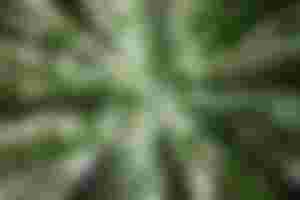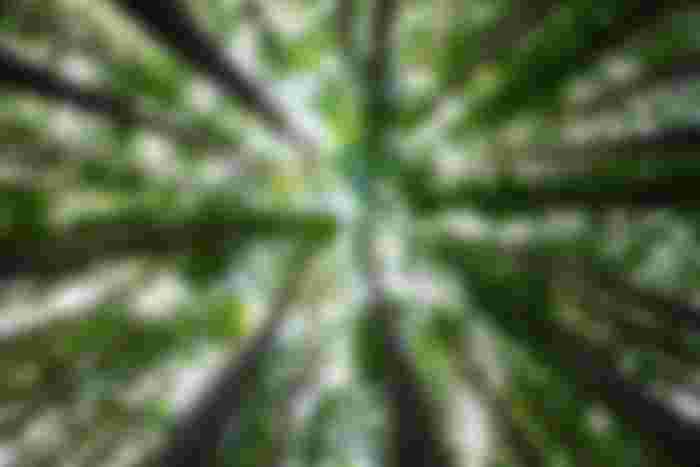All living, inanimate and physical conditions — everything is our environment. Actively. He spends his life collecting essential elements from the material world and waste materials. As or after death, all the accepted elements return to the inanimate environment. Gives. Green plants collect carbon dioxide from the air and water from the soil. 13.1 The lugo (ecosystem) releases oxygen during the formation of carbohydrates (sugars), their main food in the earth's processes. As much oxygen is needed for the respiration of plants and animals as a whole, a large part of it comes from this process of photosynthesis. Green - Green These two types of plants take some mineral salts from soil or water as food. Herbivores live by eating different parts of plants in different ways. Different levels of carnivores eat herbivores or other smaller carnivores. All animal waste is absorbed into the environment. Moreover, after death, the bodies of plants and animals return to the environment through digestion. Some microorganisms, including bacteria, do this digestion. In this way the balance of the natural environment is maintained according to the natural law. The peace and exchange of matter between plants and animals in the natural environment is called interaction, and such interactions lead to interconnections, the ecosystem of any part of the world. So ecosystem refers to a unit in a corner of the earth's surface where there are inanimate, food-producing green plants, some animals dependent on plants for food, and microorganisms to mix dead organisms into the environment, and there is a proper interrelationship between these elements. Soil, water and air are needed as sources of various elements of the organism's nutrition and other physiological processes.

The elements of the ecosystem include the community, the inert matter of the environment, and the physical environment, each of these three main elements. (a) Nonliving matters The inanimate matter of the environment builds habitat for living things, provides oxygen for respiration and also provides some nutrients. All inert elements of the ecosystem can again be divided into inorganic and organic.
Organics can be divided into these parts. (0) Inorganic matters; Water, air and minerals in the soil. The wings have been shown solely to give a sense of proportion. Inorganic material. For example, calcium, potassium, iron, nitrogen, oxygen, carbon dioxide, etc. (i) Organic matters; Plant and animal wastes or inert matter that is released into the ecosystem from the carcasses of these organisms are called organic matter. These are commonly known as humus. The components of humus include urea, various cells of plants and animals, tissues, others, etc. Organic matter is more nutritious for plants. Therefore, more organic fertilizer has to be given in plant cultivation. Books. Animals also prefer humus rich soil. (b) Physical cormponents Many factors affect the ecosystem in many ways, such as the amount of sunlight in the environment, temperature, amount of water vapor in the air, air pressure and air flow, depth from the surface or sea surface (below ground or under water) and altitude. These elements combine to form the climate and climate of the Kona region. All these are the physical elements of the ecosystem. (c) the South (Living components) The active components of the ecosystem. They bring various changes in the environment through their work. There are mainly three types of producers, eater and eater in the biological elements of the environment. (i) producer; Green plants collect carbon dioxide from the air and water from the soil in the presence of sunlight to make carbohydrates (sugars) their main food in the process of synthesis. At this time the plant releases oxygen as a by-product. So salax synthesis. Is the production process of the state, the producer is the green plant. These productive plants are called Autotroph in other words. Because they can make their own food, they don't have to rely on organisms for food. (i) Consumer: No animal can make food from inert matter of the environment. They are not dependent on their past or on the farm. That is why they are called organ.

The animals that make up the shell of all animals. This is not the case. These are masala hangi and dal of one lom, bag'l Translations into Assamese: Which || H N Locks is eating his heady carty (\). Of la yay class or in any case sarbe) adh. This is the first time that I've seen such a thing happen in my life. Takshan, shawl, as if happy. I am also Anjana? (5c4Vgd)! Herbivorous and carnivorous (omnivorosis) because they protect the environment. Eyes, when does it take to bring. Such an animal goes to the army, which is the car Ben Up also counts. The elements of this ecosystem, such as human beings, are inanimate elements. Worshipers are herbivores (1st level massive corpses etc.). Omar Alak Chi 13.01: Decomposer: Decomposer: Bacteria, fungi, etc., take their food from micro-organisms, plant and animal wastes and carcasses and eventually get rid of these wastes into soil. Merges. These mixed ingredients can then be taken back by the plants as food ingredients. So these microorganisms are called dissociators or modifiers.


Nice writing i learned lot waiting for next